How to Treat 5 Common Insect Bites in Australia

Bites and Stings
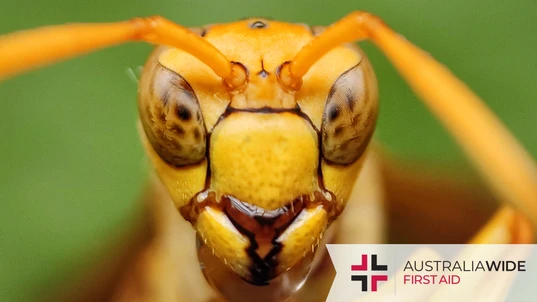
Many people don't realise that the smallest of Australia's insects can be just as deadly as our larger species like Brown snakes and Great white sharks. Continue reading to learn how to identify and treat 5 of the most common insect bites in Australia.
When people think of the dangerous animals they could encounter in Australia, they will typically list the larger species like Great White Sharks and Brown Snakes. But what many don’t realise is that even the smallest of Australian insects can be just as dangerous. And between their microscopic size to their ability to disappear before you realise you have been bitten, it can be difficult to determine whether you have been bitten or stung and if it is dangerous or not. Continue reading to learn more about how to identify and treat the five most common insect bites in Australia. If you would like to learn further first aid for other insect bites and other health conditions, click here to sign up for our general first aid course or childcare first aid course.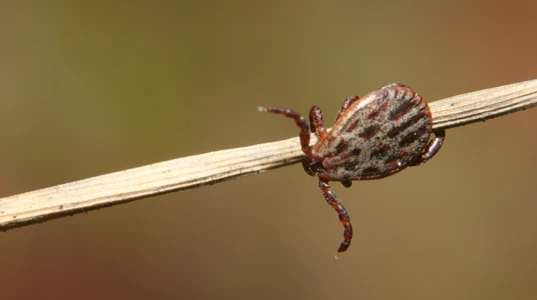
The most common species of tick to bite humans is the Paralysis Tick (pictured). On humans, Paralysis Ticks tend to bury themselves under the arms, inside the belly button, and in and around the ears. You can avoid tick bites by wearing insect repellent containing at least 20% DEET.
Tick Bites
Ticks are arachnid parasites that feed on animal and human blood. The most common species of tick to bite humans is the Paralysis Tick, which is found in eastern Australia. They are commonly found in outdoor environments with long grass and vegetation where they can drop onto passing by animals and humans. The symptoms of a Paralysis Tick Bite are:- Skin redness and itching
- Weakness and lethargy
- Loss of coordination
- Dilated pupils
- Slurred speech
- Swollen throat
- Difficulty breathing
- Anaphylaxis
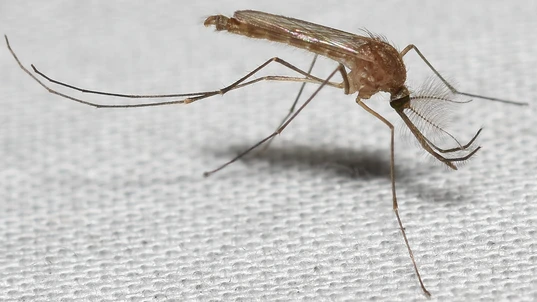
Mosquitoes can be found in just about any habitat, provided there is water. The best way to prevent mosquito bites is to avoid being outdoors during dawn and dusk, when they are most active, wearing insect repellent that contains DEET, picaridin, or oil of lemon eucalyptus, and getting rid of standing water around your home.
Mosquito Bites
The mosquito is a water-borne, flying insect that feeds on blood to survive and reproduce. They are typically found in warmer climates with high amounts of water such as La Nina rainfalls or flooding. The “floodwater mosquitos”, such as the Hexham Grey, are the species of mosquito known to bite humans. The immediate symptom of a mosquito bite is a puffy, white, and reddish bump that is itchy. It is important to not scratch a mosquito bite as this will only worsen the itch and increase the risk of infection. There are many methods of relief from the itching of a mosquito bite, such as:- Antihistamines
- Apply a heat or a cold compress
- Apply aloe vera
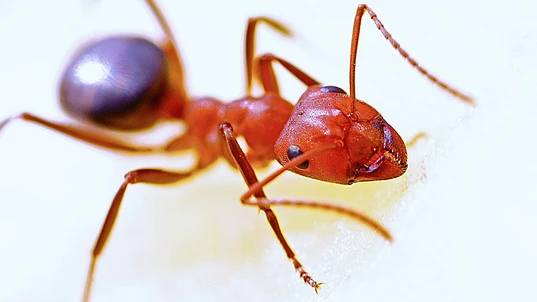
The Fire Ant (pictiured) is particularly dangerous to people with allergies, as they have been known to swarm and sting all at once when their nest is disturbed, and they can use their strong mandibles to hold onto skin while stinging repeatedly. This increases the amount of venom in the body and so the risk of anaphylaxis.
Ant Bites
Although most ants are too small to bite a human, several species in Australia can trigger uncomfortable symptoms and even life-threatening allergic reactions. Ants commonly live in outdoor environments within compact soil that has minimal ground cover or vegetation. Green Ants, Carpenter Ants, Bull Ants, Fire Ants, and Jack Jumper Ants are the species of ants known for biting humans. All ant bites have the following symptoms in common:- Red lumps at the bitten area
- Swelling
- Itchiness and/or pain
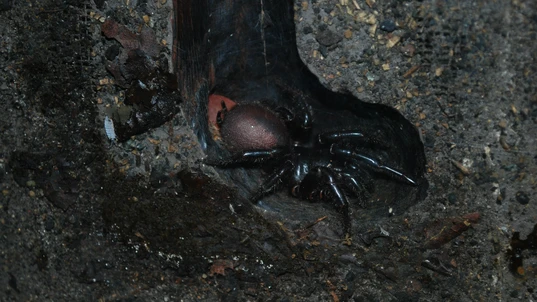
The Funnel Web (pictured) is arguably Australia's deadliest spider. The Sydney Funnel Web, in particular, has venom with a neurotoxic component that can cause cells in the nervous system to constantly fire and cause breathing difficulties, rapid heart rate, and even death.
Spider Bites
Despite being regularly grouped with insects, spiders are part of the arachnid group that is essential to the ecosystem to keep insect populations under control. Most spiders are typically inhabit outdoor areas, creating webs in dry areas such as around rocks, and inside sheds. Many spiders will also migrate inside in warmer seasons. Most spiders are relatively harmless and are only known to bite if they feel threatened or their webs are disturbed. Funnel Web Spiders, Mouse Spiders, White Tailed Spiders, and Red Back Spiders are the species with higher reports of dangerous bites resulting in deadly reactions if not treated immediately. The following symptoms could indicate a venomous spider bite:- Red and itchy area on the skin
- Pain
- Nausea or vomiting
- Sweating
- Dilated pupils
- Muscle spasms or weakness
- Unconsciousness
- Fast pulse and high blood pressure
- Big Black Spider Bite (such as a Funnel Web Spider): a pressure bandage should be applied to the bitten area and the limb (arm, leg, etc.) should not be moved
- Red Back Spiders and Other Species: wash the bitten area and apply a cold pack
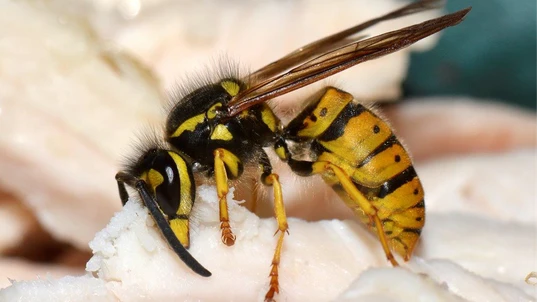
European Wasps (pictured) are more aggressive than bees and will attack when their nest is disturbed. Likewise, they can sting more than once without dying. Depending on how many times a person is stung, they can experience symptoms ranging from a burning pain and swelling to anaphylaxis.
Bee and Wasp Stings
Bee and wasp stings are very common in Australia, with bee stings being the number one allergy leading to hospitalisations throughout the country. Bees are less aggressive than wasps, with bee stings occurring because they have been stood on when walking outdoors. Wasps, such as the European wasp, are far more aggressive and will live in warm, human environments as they are attracted to food and drinks. Unlike a bee, wasps do not lose their stinger when they sting a human, so they will sting multiple times instead of just once. The immediate symptoms of a bee or wasp sting are redness around the affected area, pain, and itching. If the person is allergic to bee or wasp venom, anaphylaxis may occur, and medical attention should be sought immediately. If the person does not have an allergic reaction, the area should be checked for if the stinger is embedded in the skin. If so, the stinger should be removed, the area then cleaned and an ice pack applied to reduce swelling and pain. Our Comprehensive Guide to Bees and Wasps as well as our European Wasp Warning article has more information about preventing and treating stings.Final Thoughts
It is clear to see why Australia’s insects should also be considered just as dangerous as our bigger deadly animals. From painful bites to triggering death-inducing allergic reactions, bites and stings from insects should be treated immediately and safely to prevent pain and discomfort. For more extensive information about treating insect bites for the five insects discussed in this article, check out our resource pages here. If you would like to learn first aid for other insect bites and other health emergencies, click here to sign up for our general first aid course or childcare first aid course.
Originally published at
https://www.australiawidefirstaid.com.au/resources/common-insect-bites-australia
as part of the Australia Wide First Aid Articles Library









